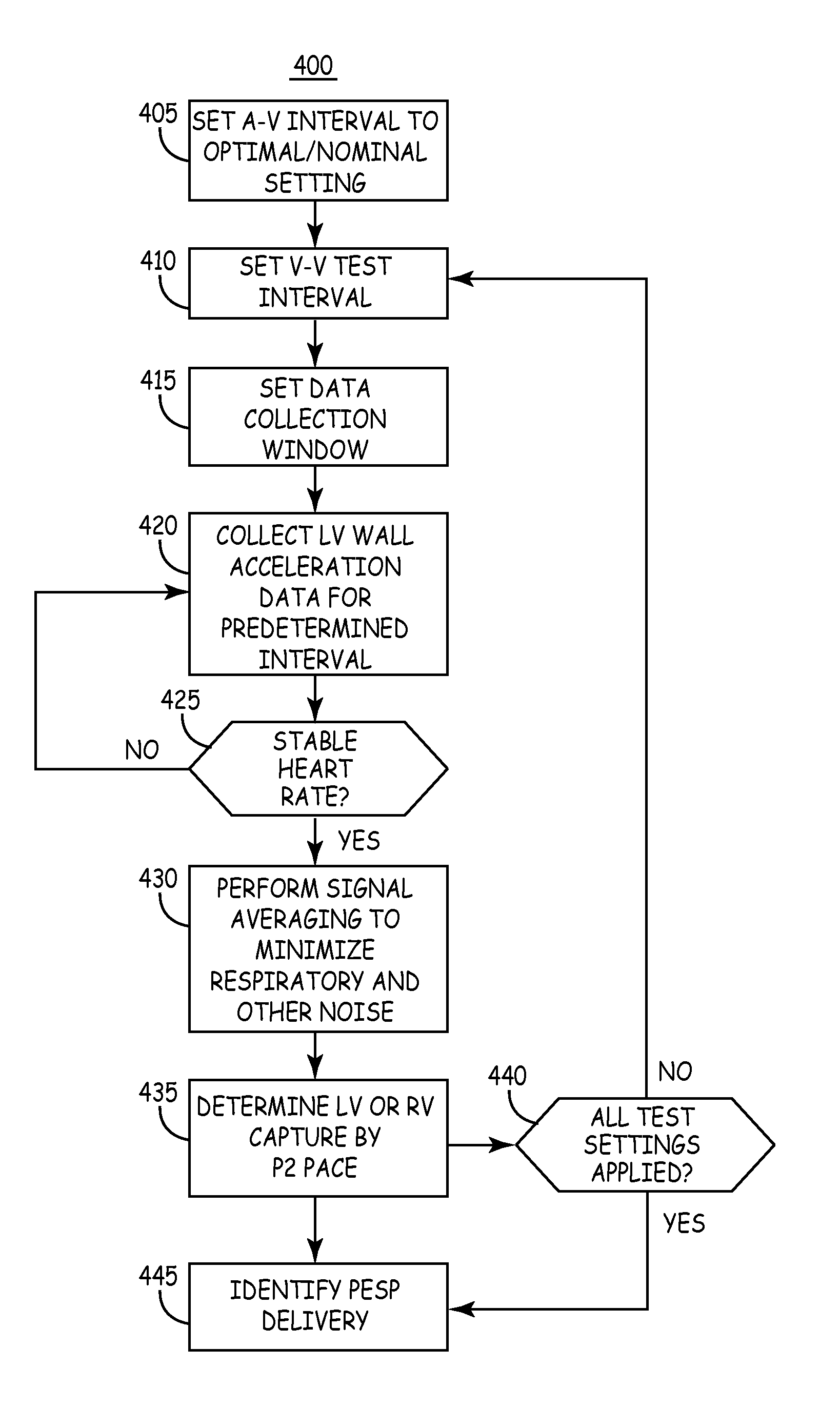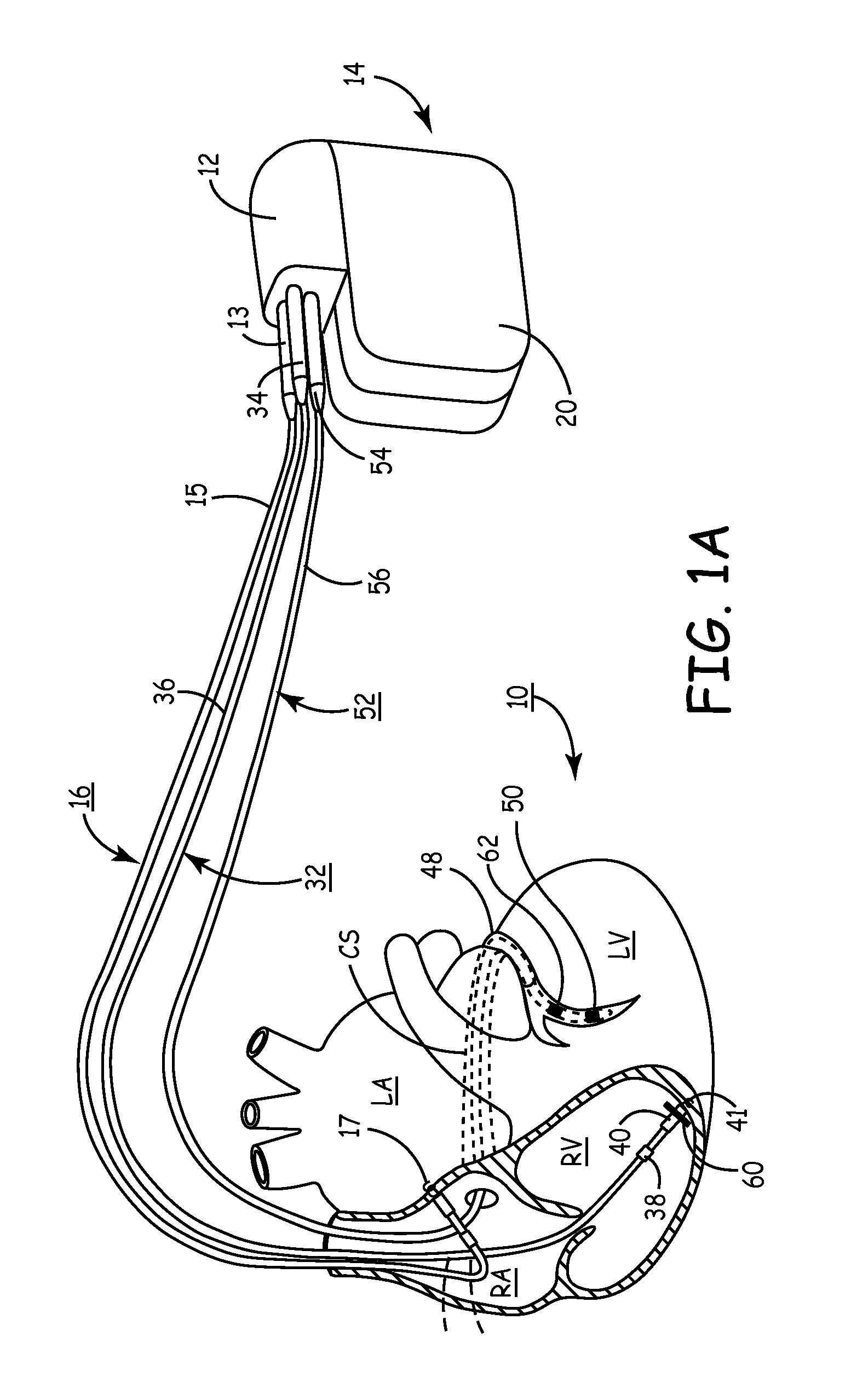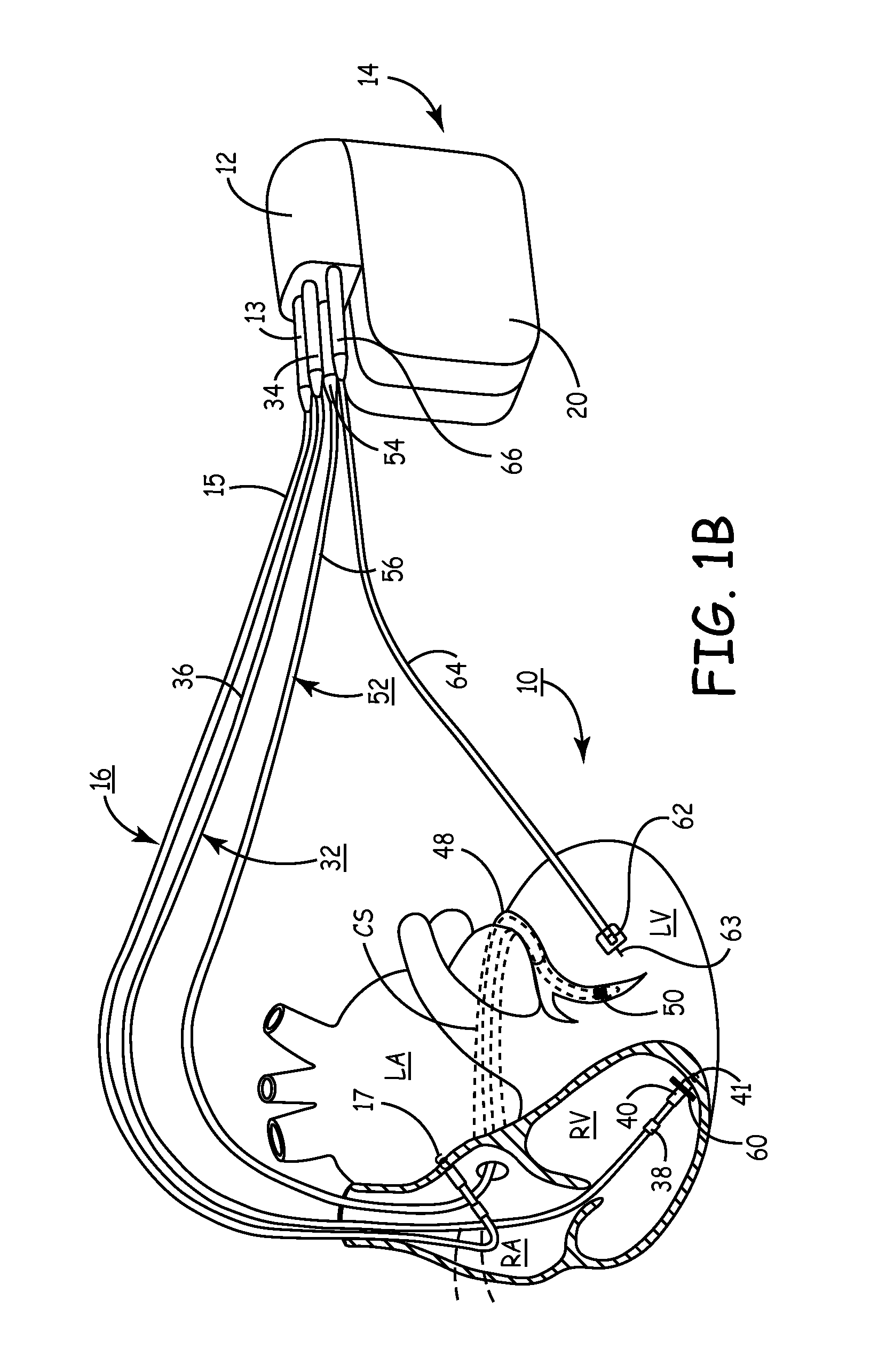Mechanical ventricular pacing capture detection for a post extrasystolic potentiation (PESP) pacing therapy using at least one lead-based accelerometer
a technology of mechanical ventricular pacing and capture detection, which is applied in the field of implantable medical devices, can solve the problems of hemodynamic insufficiency, reduced the ability of the ventricle to generate contractile strength, and clinical or physician difficulties in confirming lack of therapeutic benefits, so as to improve cardiac perfusion and terminate the delivery of pesp therapy.
- Summary
- Abstract
- Description
- Claims
- Application Information
AI Technical Summary
Benefits of technology
Problems solved by technology
Method used
Image
Examples
Embodiment Construction
[0022]As indicated above, the present invention is directed toward providing a method and apparatus for monitoring one of more chambers of a heart for optimizing electrical pulses using mechanical parameters based on monitoring ventricular wall acceleration (e.g., LV free wall). In particular, the present invention is useful for ensuring chamber capture during pacing therapies used for treating heart failure such as PESP therapy. The present invention is also useful in ensuring capture during temporary pacing applied for treating post-operative ventricular dyssynchrony. As such, the present invention may be embodied in an implantable cardiac pacing system including a dual chamber or multichamber pacemaker and associated set of leads. Alternatively, the present invention may be embodied in a temporary pacing system including an external pacing device with associated temporary pacing leads.
[0023]FIG. 1A depicts an exemplary implantable, multi-chamber cardiac pacemaker 14 in which the ...
PUM
 Login to View More
Login to View More Abstract
Description
Claims
Application Information
 Login to View More
Login to View More - R&D
- Intellectual Property
- Life Sciences
- Materials
- Tech Scout
- Unparalleled Data Quality
- Higher Quality Content
- 60% Fewer Hallucinations
Browse by: Latest US Patents, China's latest patents, Technical Efficacy Thesaurus, Application Domain, Technology Topic, Popular Technical Reports.
© 2025 PatSnap. All rights reserved.Legal|Privacy policy|Modern Slavery Act Transparency Statement|Sitemap|About US| Contact US: help@patsnap.com



